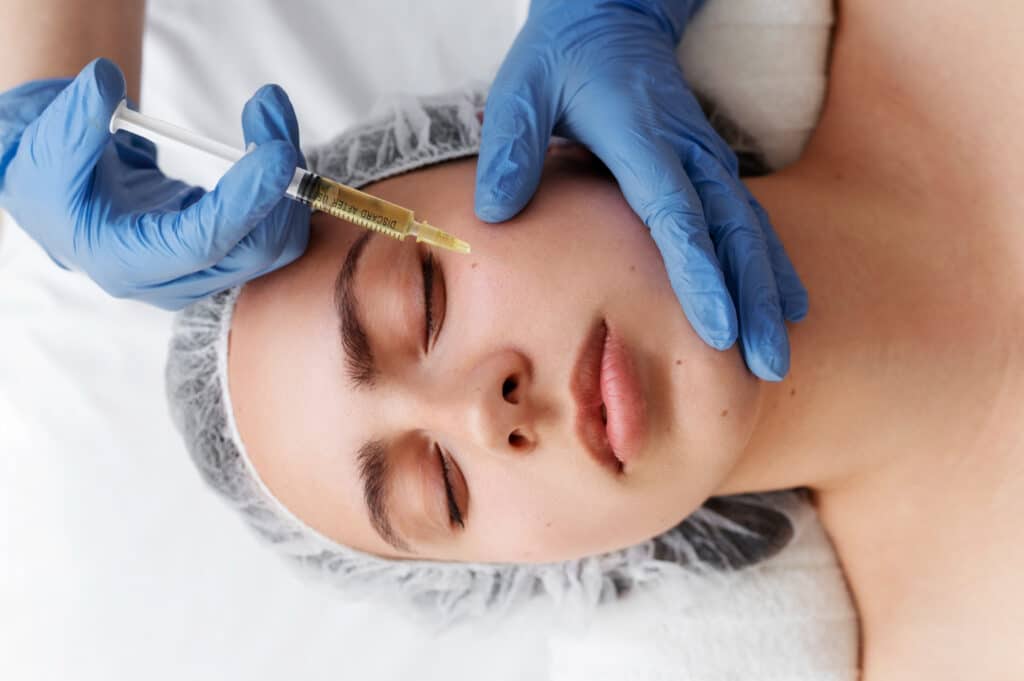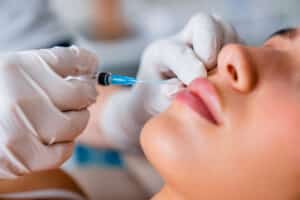The most convenient beauty concept is skin rejuvenation which can be done using various techniques such as the PRP facial. However, various myths, rumours, and even misleading information about the facial type exist. That is why we have curated the following information to inform you about the beauty rejuvenation process.
What Do You Mean By A PRP Facial?
PRP facials, also called vampire facials, involve platelet-rich plasma (PRP) derived from a patient’s blood. The procedure starts with an experienced professional drawing blood from the patient. Later, it is placed in a centrifuge to separate the platelet-rich plasma from the rest of the blood.
The process continues with the PRP getting applied to the patient’s face using a micro-needling process or injections. The PRP growth factors stimulate collagen production and improve the appearance of wrinkles, fine lines, and acne scarring that bother individuals as soon as they reach adulthood.
PRP facials are safe, and they have minimal side effects. Individuals can consult a professional if they are skeptical about the facial procedure.
What Are The Steps Involved in PRP Treatment?
A PRP treatment is not much complex and typically involves the following steps.
Blood Draw: The treatment begins with drawing a small amount of blood from the patient. It usually gets drawn from the arm area.
Centrifugation: The blood gets placed in a centrifuge that helps spin it at high speeds to separate the platelet-rich plasma (PRP) from the rest of the blood.
Preparation of PRP: The final process is the preparation of PRP for the treatment. It can be activated by adding calcium chloride or mixed with other solutions depending on the application method.
Treatment Application: Later, the PRP gets applied to the treatment area, typically using micro-needling or injections.
Post-treatment Care: The patient may be instructed to avoid certain activities after the treatment, such as sun exposure. The person may also be given a few specific post-treatment care instructions.
The entire PRP treatment procedure typically takes about an hour.
Patients can return to their normal activities immediately after the facial. A qualified professional performs the treatment and provides the required consultation to the patients whenever necessary.
Advantages of PRP Facials
PRP facials have multiple advantages; the most important ones are discussed below.
Natural Results: PRP facials use the patient’s blood. That is why there is no risk of an allergic reaction to the individual.
Minimal Downtime: PRP facials require minimal recovery time, and patients can return to normal activities immediately after the said procedure.
Stimulation of Collagen Production: PRP is rich in growth factors that can stimulate collagen production. The process can further improve the appearance of fine lines, wrinkles, and acne scarring.
Versatility: PRP can be used with other treatments, such as micro-needling, to enhance results. It can also be used for hair growth and other related treatments.
Safe: PRP is a safe skin treatment option with minimal side effects.
Typical Results of a PRP Facial
The typical results of a PRP facial can vary depending on several factors, including the individual’s skin type, the severity of their skin concerns, and the specific methods used during the treatment.
However, here is a breakdown of the common benefits of PRP facials.
Improved Skin Tone and Texture: PRP facials can stimulate collagen production and improve the overall texture and skin tone.
Reduced Appearance of Fine Lines and Wrinkles: The growth factors in PRP can help make the skin plump and reduce the appearance of fine lines and wrinkles.
Improved Skin Elasticity: Collagen production can improve the skin’s elasticity. The process results in a firmer and more youthful appearance.
Reduced Acne Scarring: PRP facial can also improve the appearance of acne scarring because it helps stimulate collagen production in the affected areas.
Reduced Redness: PRP treatment can reduce redness and inflammation, resulting in a more even skin tone.
Myths and Facts about PRP Facials
PRP facials have grown popular in recent years, but there are still many misconceptions and myths surrounding the procedure. Here is a breakdown of some myths and facts related to PRP facials.
Myth: PRP facials are painful.
Fact: PRP facials are not painful, and the procedure is typically well-tolerated. However, patients may feel mild discomfort during the micro-needling or injection process. However, it can be minimized by using a numbing cream or a local anesthetic.
Myth: PRP facials are only for individuals with severe skin concerns.
Fact: PRP facials can benefit people of all ages and skin types. The procedure can improve the appearance of fine lines and wrinkles, acne scarring, and uneven skin tone.
Myth: A plastic surgeon or aesthetician can only perform PRP facials.
Fact: Healthcare professionals, including plastic surgeons, dermatologists, and aesthetic nurses, can conduct PRP facials.
Myth: PRP facials can be performed only once on the patients.
Fact: The number of PRP treatments needed will vary depending on the individual and the severity of their skin concerns.
Myth: PRP facials are dangerous.
Fact: PRP facials are safe and have minimal side effects on the skin.
PRP facials can be a safe and effective treatment option for various skin concerns, but it’s important to consult a qualified professional before the procedure. It’s also important to have realistic expectations and to understand that individual results may vary.





